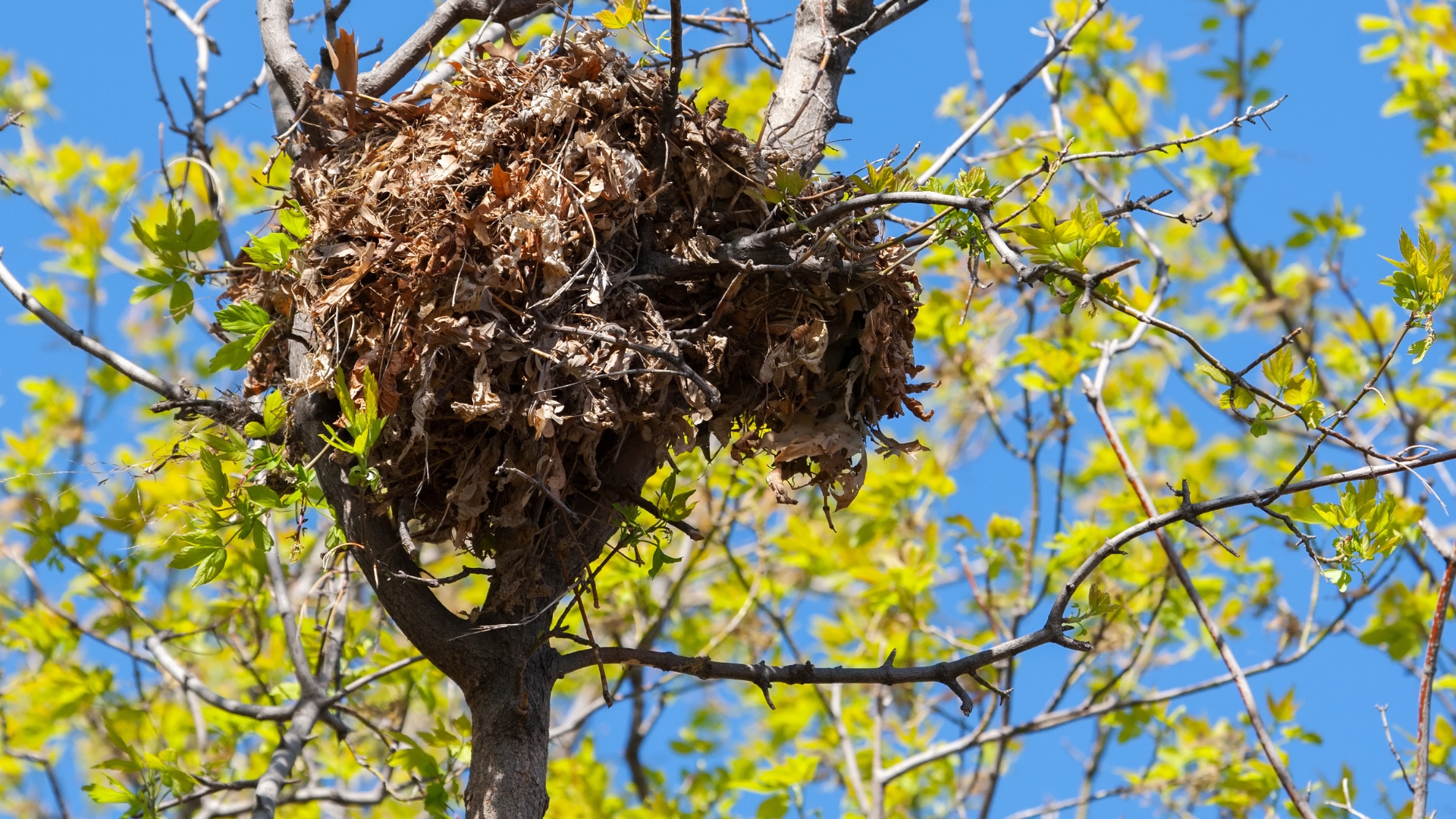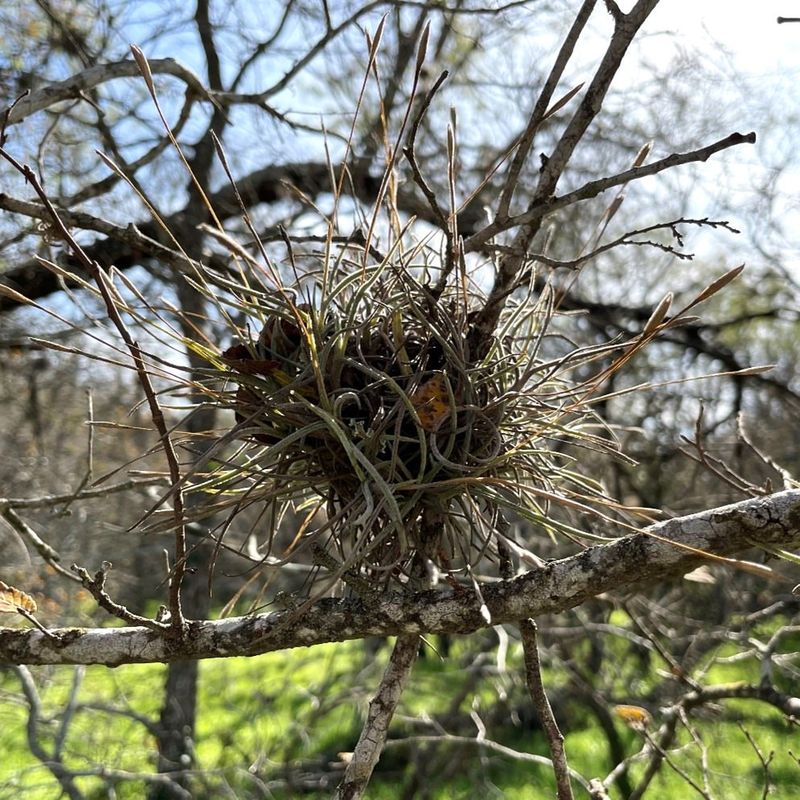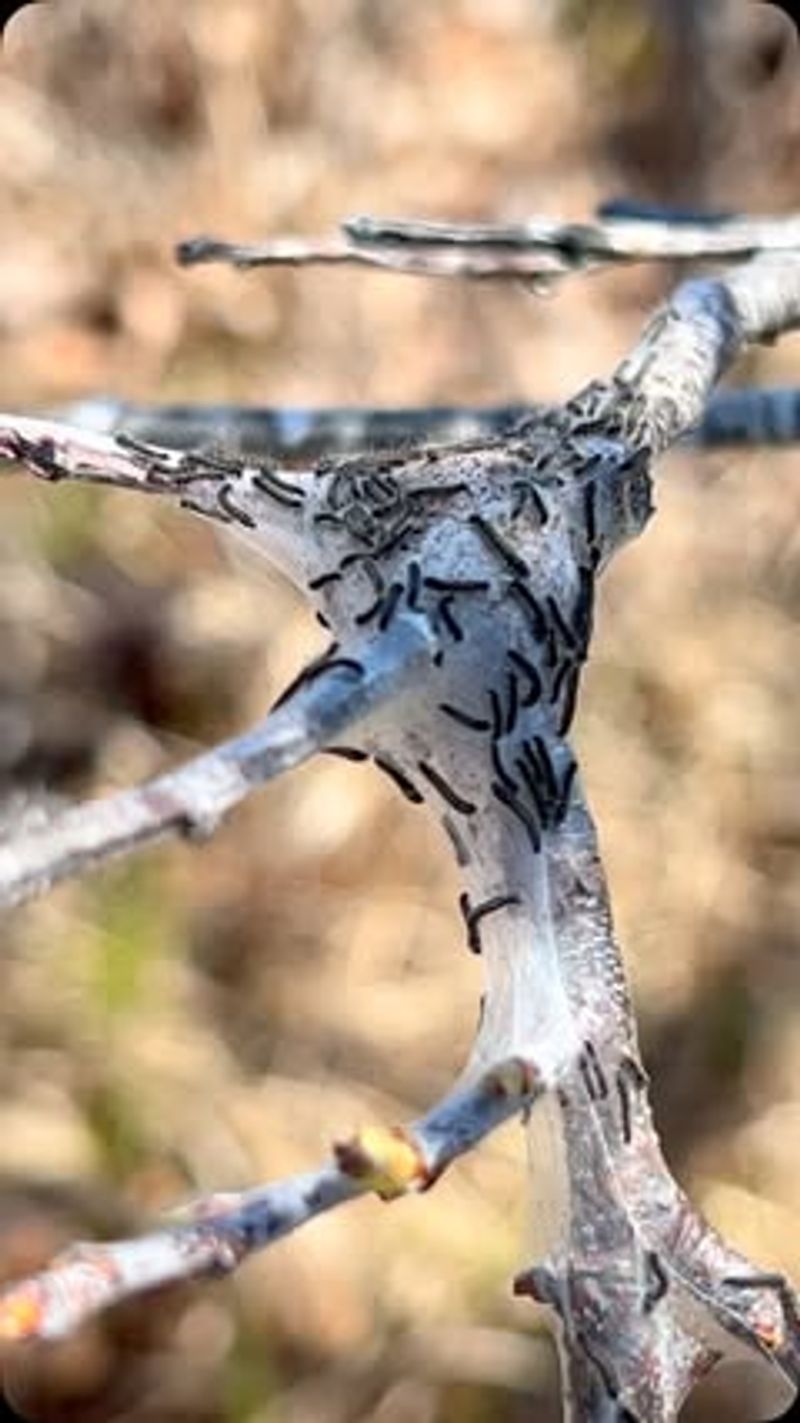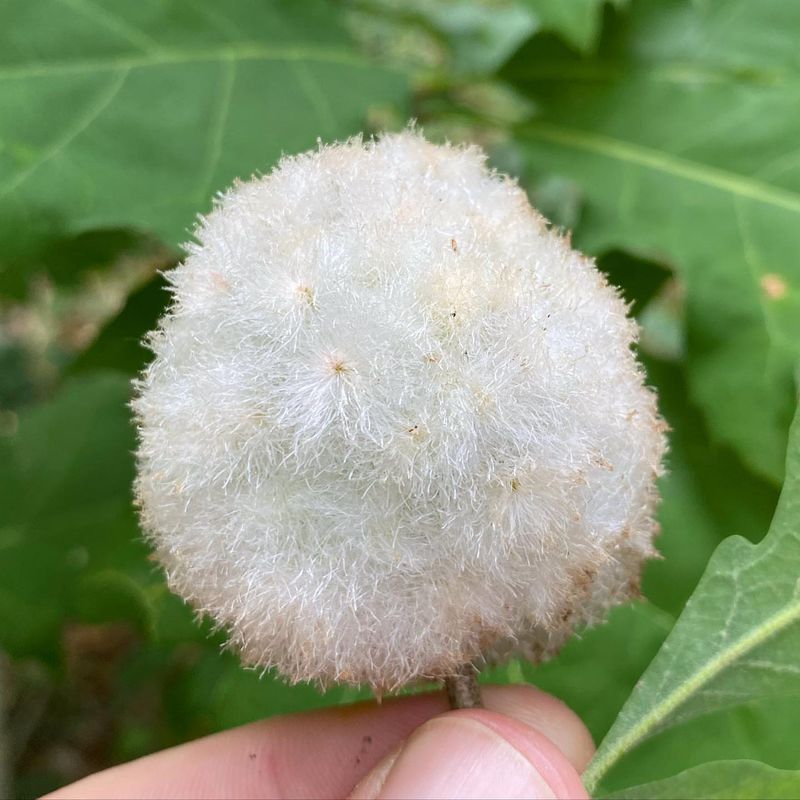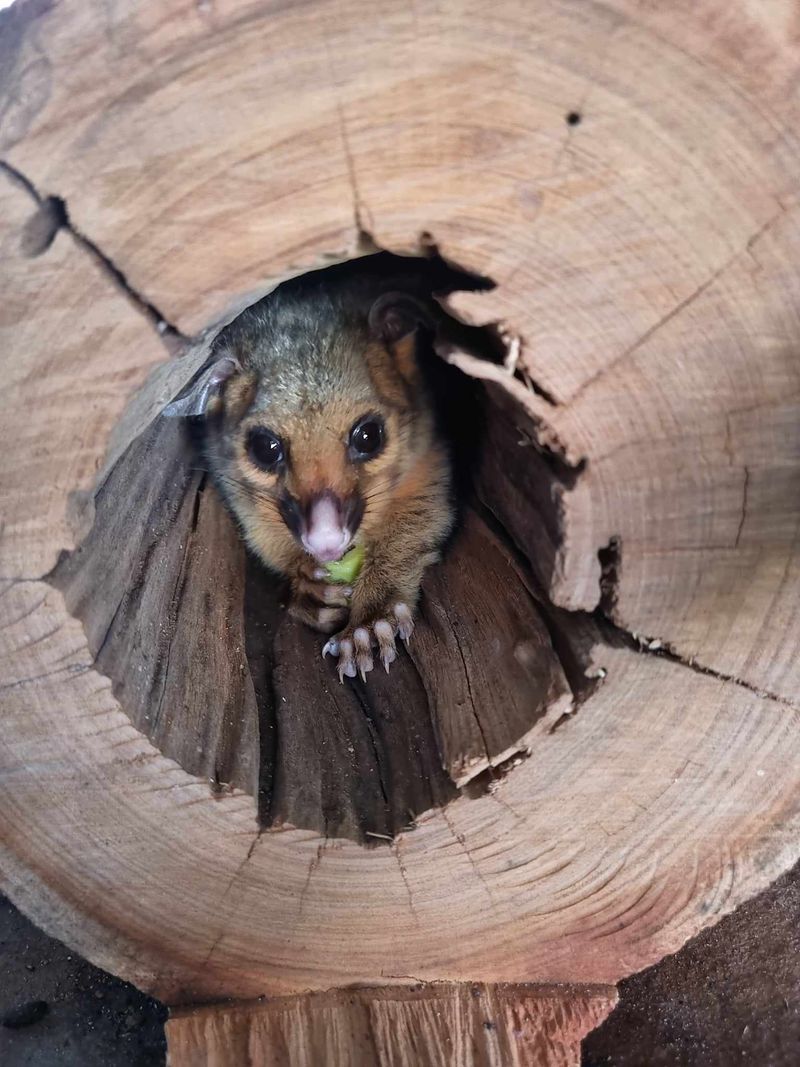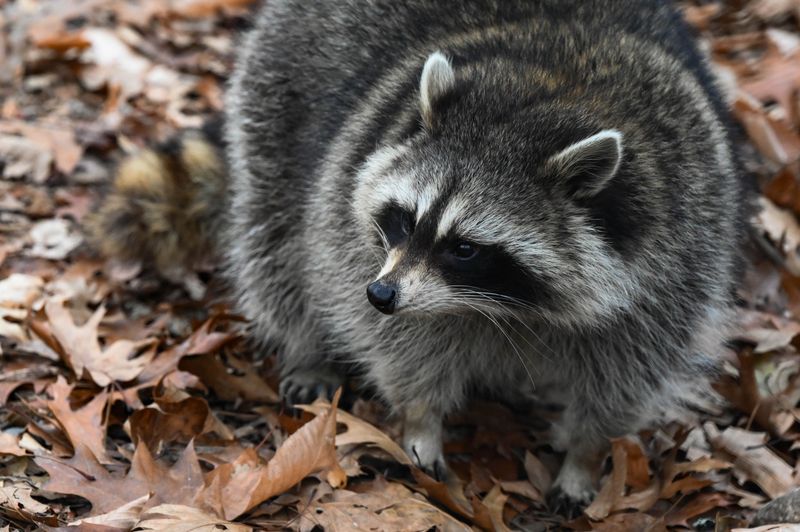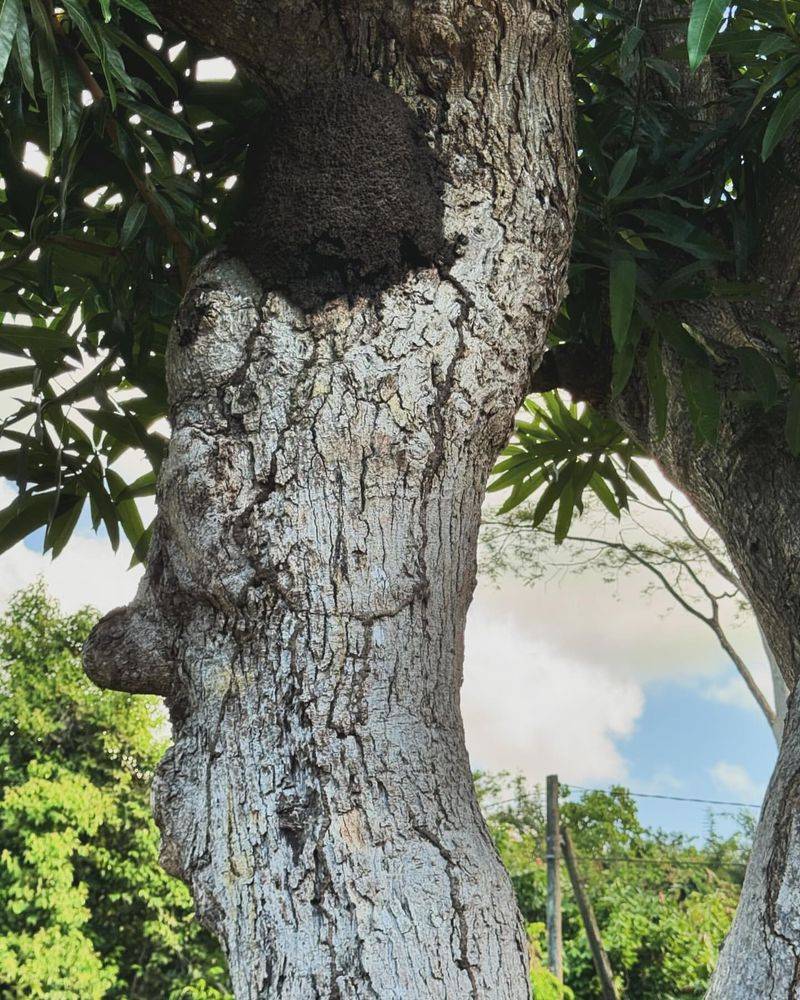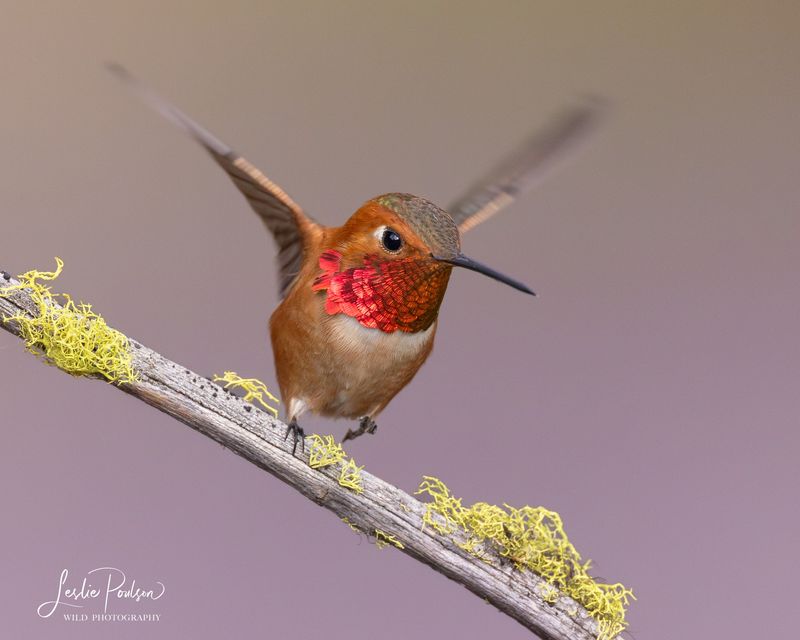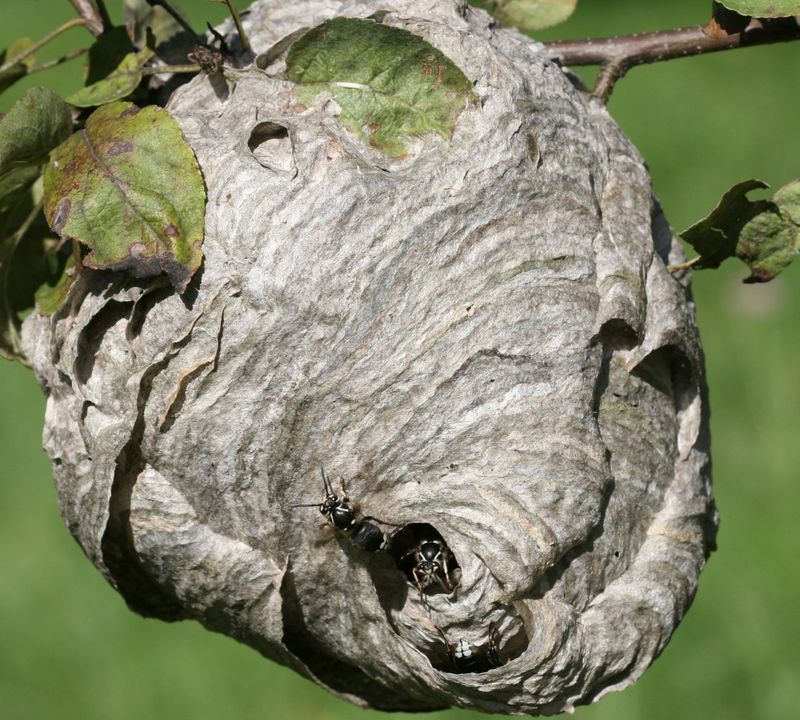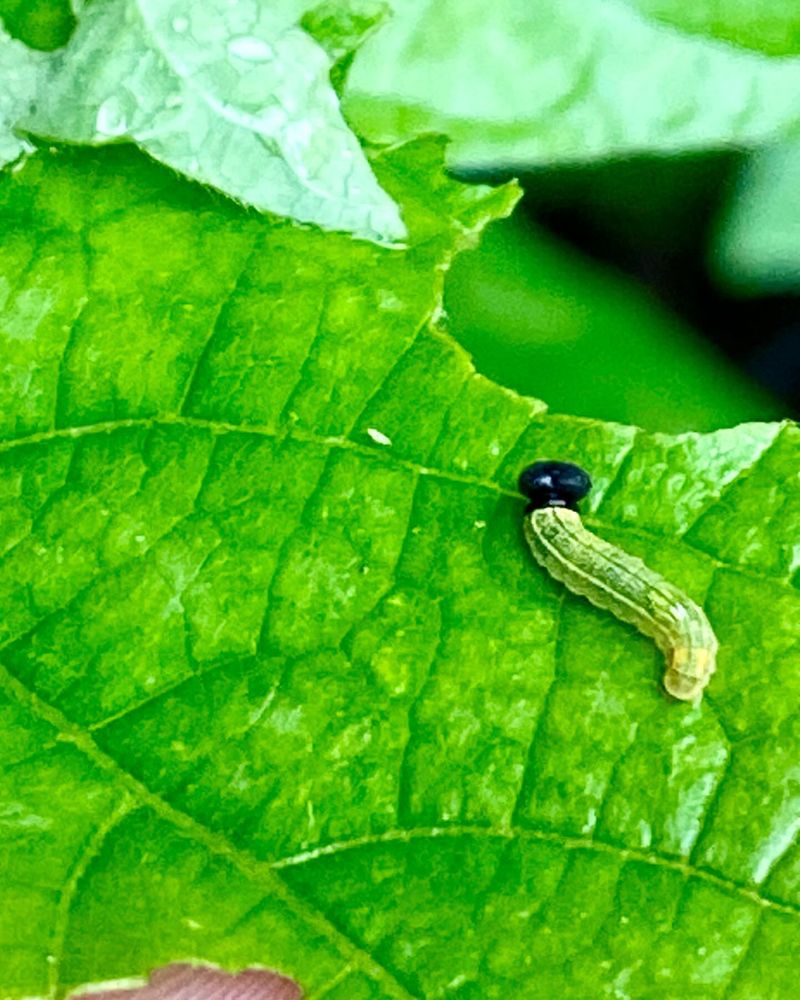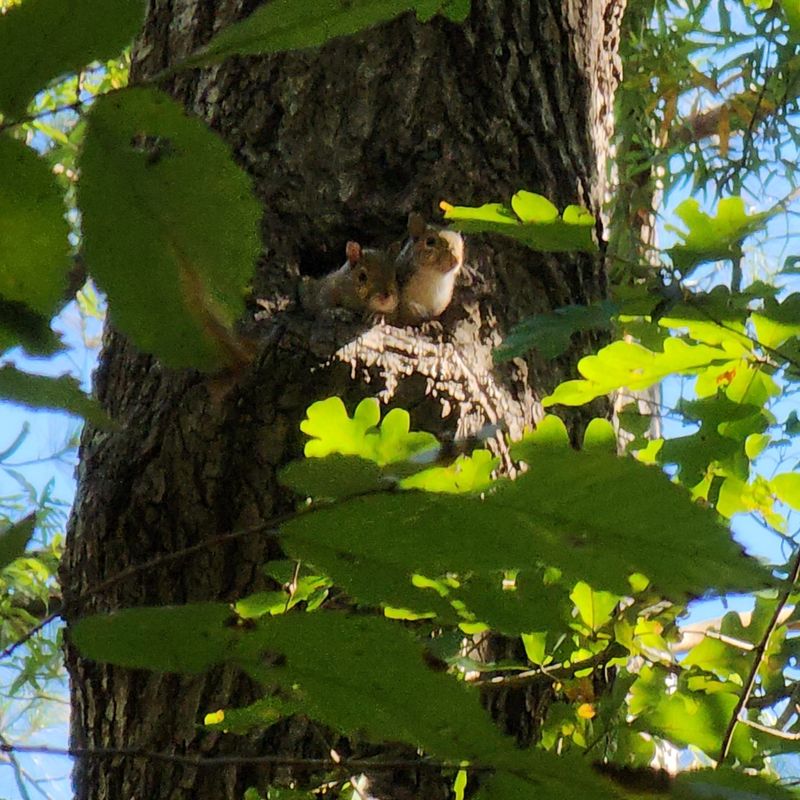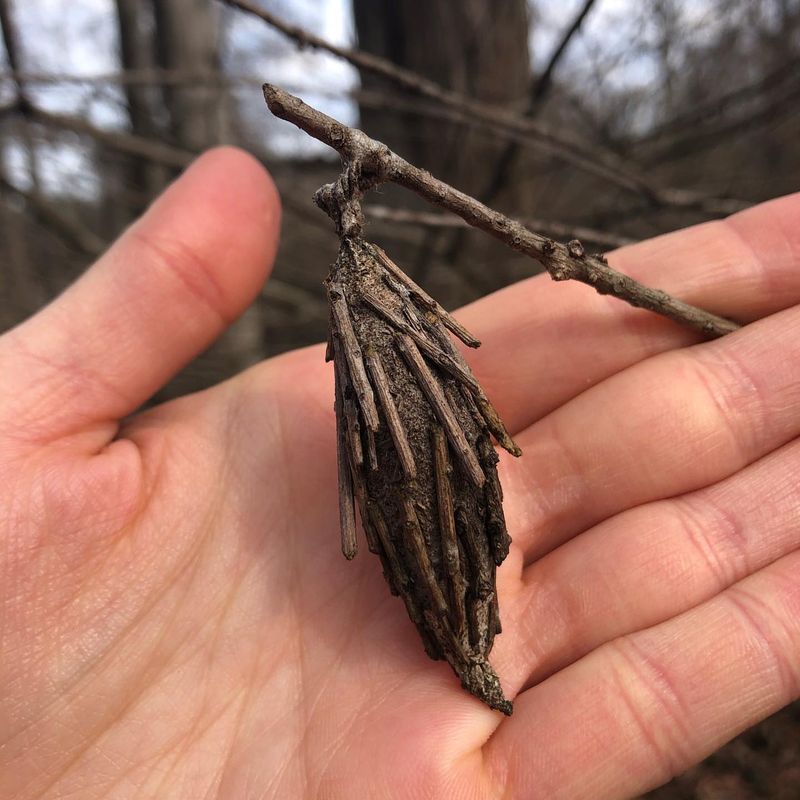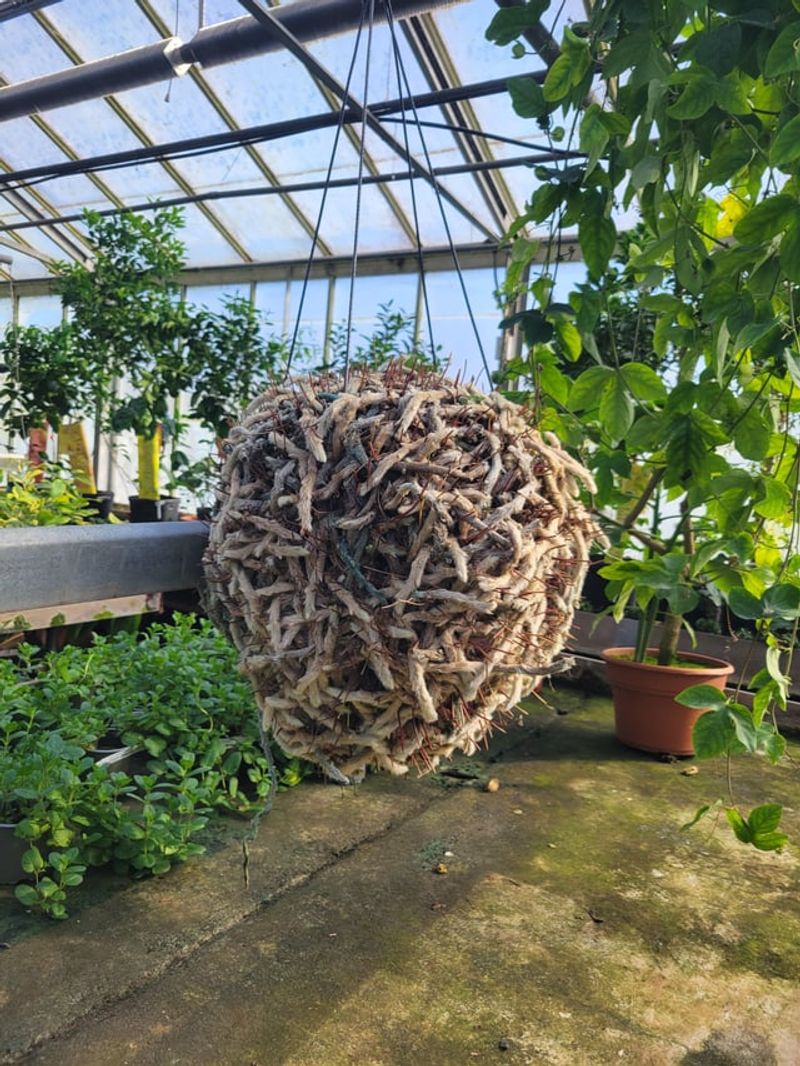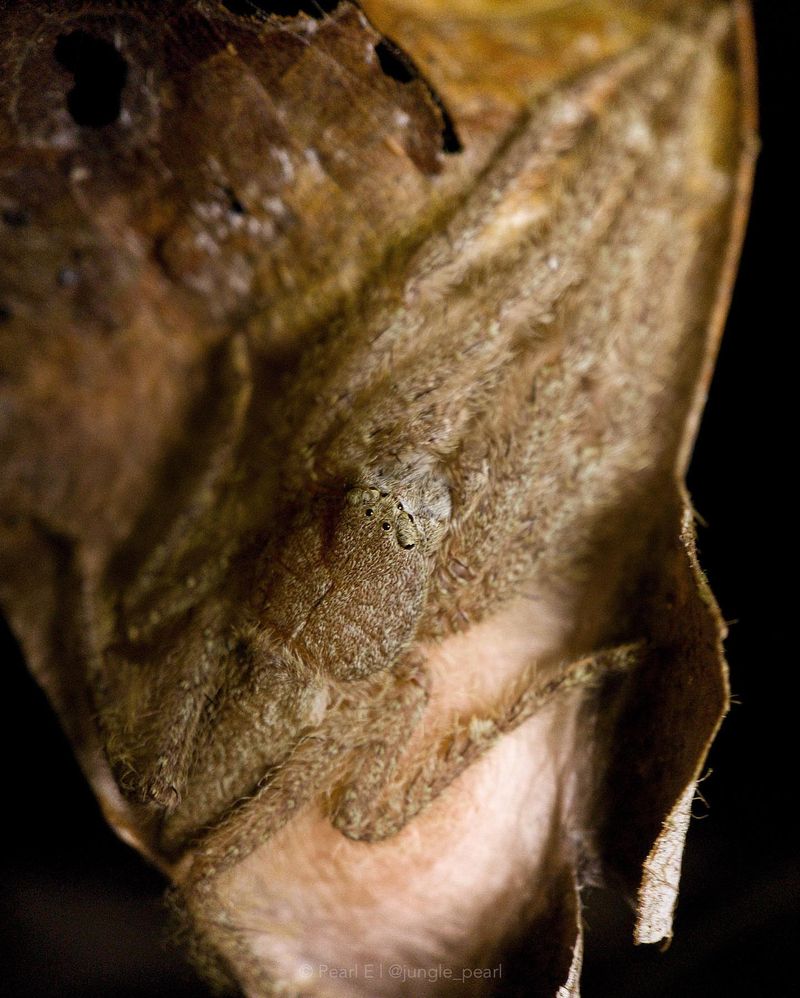You glance up and spot a round, leafy ball nestled in your tree’s branches. First thought? Bird nest. But not so fast. While it might look like a cozy home for your feathered neighbors, chances are it’s something entirely different.
In fact, there are all kinds of creatures—and even natural quirks—that can create a leafy lump in your tree. From squirrels to bugs to wind-blown surprises, these 15 possibilities might just change the way you look up.
1. Squirrel Nests (Dreys)
Bushy-tailed architects construct these leafy condos as cozy hideaways from predators and harsh weather. Squirrels weave twigs, leaves, and moss into surprisingly sturdy structures that can withstand strong winds and heavy rain.
The average drey measures about 12 inches in diameter with a soft inner chamber lined with shredded bark, grass, and even stolen insulation materials. Look for these high up in tree forks, typically 20-30 feet above ground where predators can’t easily reach.
2. Bird Apartment Complexes
Some feathered neighbors prefer community living! Social weavers and other colony-nesting birds build massive leaf structures that house multiple families under one leafy roof. These avian condominiums can contain dozens of separate nesting chambers.
The exterior might look messy, but inside you’ll find meticulously crafted individual rooms. Each chamber serves as a private nursery for eggs and chicks. These impressive structures can remain in use for generations, with birds continuously maintaining and expanding their leafy apartment buildings.
3. Tent Caterpillar Colonies
Those silky, web-covered leaf clusters might be housing hundreds of hungry caterpillars! Eastern tent caterpillars create these protective silk fortresses where they gather at night and during bad weather.
The caterpillars emerge during daylight to munch on surrounding leaves, returning to their silky headquarters when threatened. While unsightly, a single colony rarely causes permanent damage to healthy trees. By midsummer, the caterpillars will have metamorphosed into moths, abandoning their silky childhood home.
4. Leaf Galls
Mother Nature’s weird science experiment! These bulbous growths form when certain insects inject chemicals into leaves, causing plant tissues to swell into bizarre shapes. Inside each gall, insect larvae develop safely while feeding on the surrounding plant material.
Oak trees host over 800 different types of galls, from marble-sized spheres to star-shaped oddities. Despite their alien appearance, most galls cause minimal harm to healthy trees. Think of them as tiny insect nurseries – bizarre but fascinating examples of plant-insect relationships.
5. Possum Sleeping Quarters
North America’s only marsupial needs a cozy place to snooze during daylight hours! Opossums occasionally repurpose abandoned squirrel nests, adding their own touches like extra leaves and grass for insulation.
Unlike permanent residents, opossums typically use these leafy retreats temporarily while foraging in an area. Their presence might be betrayed by a distinctive musky odor or glimpses of a prehensile tail hanging from the nest edge. These beneficial creatures help control ticks and other pests in your yard.
6. Witches’ Brooms
No, not the flying kind! These dense, broom-like clusters of twigs and leaves result from a fungal infection or mite infestation disrupting normal growth patterns. The tree responds by producing abnormal bunches of shoots from a single point.
Native Americans once harvested witches’ brooms to actually make brooms! While generally harmless to established trees, these bizarre growths can live for years, creating distinctive silhouettes in winter. Some gardeners even prize these natural oddities, grafting them to create dwarf ornamental trees.
7. Raccoon Resting Spots
Those masked bandits need daytime hideouts too! Raccoons occasionally commandeer leaf clusters as temporary resting places during their nocturnal adventures. Unlike squirrels, they don’t build these nests but opportunistically use existing structures.
Look for telltale signs like food scraps or droppings nearby. Raccoons prefer nests with good overhead cover and escape routes. While primarily tree hollow dwellers, mama raccoons sometimes use leaf nests as secondary nurseries when moving their kits between preferred den sites.
8. Termite Carton Nests
In tropical and subtropical regions, certain termite species construct what look like dark, papery balls of leaves high in trees. These aren’t actually made of leaves but a mixture of chewed wood, soil, and termite saliva called “carton.”
Connected to the ground by covered mud tunnels running up the trunk, these aerial fortresses house thousands of destructive insects. Unlike their ground-dwelling cousins, arboreal termites don’t eat living wood but feed on dead branches and leaf litter collected by worker termites.
9. Hummingbird Micro-Mansions
The tiniest architects in your backyard! Hummingbird nests resemble small leafy knots or bumps on branches, often camouflaged with lichen, moss, and plant fibers. These thimble-sized marvels are bound together with sticky spider silk that allows the nest to expand as babies grow.
Female hummingbirds build these engineering masterpieces alone, sometimes incorporating decorative elements like flower petals. The interior is lined with the softest plant down for egg protection. Despite their diminutive size, these nests are remarkably durable, sometimes reused for multiple broods.
10. Wasp Condominiums
Paper wasps and hornets construct those papery, football-shaped nests from chewed wood fibers mixed with their saliva. What appears to be leaves from a distance is actually a sophisticated insect apartment complex housing hundreds of residents!
Each hexagonal cell inside nurtures a developing wasp larva. The outer layers provide waterproofing and insulation. While intimidating, these master architects actually help gardeners by controlling caterpillars and other pests. Just admire their architectural skills from a respectful distance!
11. Leaf Roller Caterpillar Hideouts
Tiny engineers with silk-spinning skills! Leaf roller caterpillars produce silk threads that contract as they dry, literally pulling leaves into curled tubes or bundles. Inside these leafy sleeping bags, the caterpillars munch away protected from predators.
One species can fold a leaf edge with the precision of origami masters. Another binds multiple leaves together into a messy cluster. The caterpillar’s silk acts like natural stitching, holding their leafy sanctuary together until they emerge as moths or butterflies.
12. Flying Squirrel Dormitories
Nocturnal gliders need daytime crash pads! Flying squirrels build leaf nests similar to their non-flying cousins but with distinctive differences. Their constructions typically feature more interior chambers and multiple escape hatches for quick gliding getaways.
A colony of flying squirrels might share a single large nest during winter for warmth. Their leafy bundles often incorporate unusual materials like feathers, fur, and even snakeskin for added insulation. Listen for soft chirping sounds at dusk as these adorable creatures prepare for nightly adventures.
13. Bagworm Moth Sacks
Walking leaf houses! Bagworm caterpillars construct portable homes by weaving silk and decorating with bits of the host plant. What looks like a strange cone of leaves dangling from branches is actually a clever insect carrying its house wherever it goes.
Female bagworms never leave their bags, even as adults. They transform into wingless moths that lay eggs inside their leafy homes before dying. Males develop wings and fly off to find mates. These bizarre pendulous structures remain hanging in trees long after their creators have departed.
14. Rat King-size Beds
Urban wildlife adapts in surprising ways! In areas where trees and buildings coexist, roof rats sometimes construct leaf nests high in trees near human dwellings. Unlike squirrel dreys, rat nests tend to be messier and incorporate human materials like paper, plastic, or fabric.
Female rats build the most elaborate nests when preparing for babies. These rodent architects create multiple chambers including nurseries and food storage areas. While concerning from a pest perspective, these nests demonstrate remarkable adaptive behavior in animals learning to thrive alongside humans.
15. Spider Silk Nurseries
Some spider species create nursery webs by pulling leaves together with silk to protect their egg sacs. These leafy bundles might house hundreds of tiny spiderlings waiting to hatch! The mother spider stands guard nearby, defending her future offspring from threats.
The leaves provide camouflage and protection from rain and wind. When the spiderlings hatch, they remain in this silky daycare center until ready to disperse. Despite their creepy reputation, these eight-legged moms show remarkable parental dedication, sometimes sacrificing meals to maintain their protective leaf fortresses.

